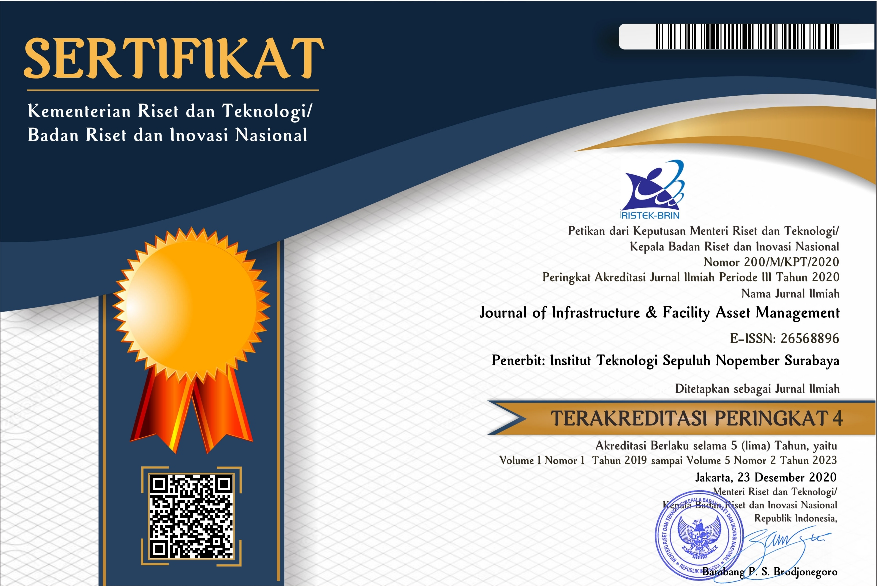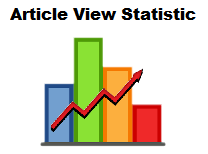Urban Resilience: How to Apply in the Planning and Design Practice?
Abstract
The topic of urban resilience has been gain much interest in the field of sustainability yet the use of the concept particularly for urban planning and design is still in debate. This paper searches for the gap in the use of the urban resilience concept for planning and design practice. The resilience terminology itself emerges and is known from the socio-ecological perspective, therefore the development of the terminology into the built environment issue needs to be appropriately translated. This paper aims to explore the advocacy of how urban resilience should be put into the discourse of planning and design practice, especially the standing of the concept within planning theory. The study is conducted through a literature review with objectives among others: (1) to get insight into what is urban resilience concept and how it has been used in the context of the urban and regional system? and (2) to elaborate on the potential of urban resilience concept be used in the planning and design practice through the perspective of planning theory. The initial result of the study concludes that the urban resilience concept has the potential to reframe the perspective of planning theory that has been applied nowadays, particularly the theory of planning and theory in planning with the emergence of so-called transformative and recovery planning. Both planning approaches must be considered the urban system as the object of planning.
Full Text:
PDFReferences
Alexander, D.E. (2013). “Resilience and disaster risk reduction: an etymological journey”. Natural Hazards Earth System Science 13: 2707–2716.
Campanella, TJ. (2006a). “Urban resilience and the recovery of New Orleans”. Journal of the American planning association 72(2): 141-146.
Campanella, TJ. (2006b). “Making resilient cities: Some axioms of urban resilience”. Xi'an International Conference of Architecture and Technology. Proceedings 2006 (pp. 67-70).
Chelleri, L and Olazabal, M (Eds.). (2012). Multidisciplinary perspectives on urban resilience: a workshop report. BC3. Basque Centre for Climate Change.
Cutter, SL Burton, CG and Emrich, CT. (2010). “Disaster resilience indicators for benchmarking baseline conditions”. Journal of homeland security and emergency management, 7(1): 1- 22.
Carpenter, SR Westley, and Turner, MG. (2005). “Surrogates for resilience of social–ecological systems”. Ecosystems 8(8): 941-944.
Davoudi, S Shaw, K Haider, LJ Quinlan, AE Peterson, GD Wilkinson, C. & Davoudi, S. (2012). “Resilience: a bridging concept or a dead end? “Reframing” resilience: challenges for planning theory and practice interacting traps: resilience assessment of a pasture management system in Northern Afghanistan urban resilience: what does it mean in planning practice? Resilience as a useful concept for climate change adaptation?. The politics of resilience for planning: a cautionary note: edited by Simin Davoudi and Libby Porter. Planning theory & practice 13(2): 299-333.
Desouza, KC and Flanery, TH. (2013). “Designing, planning, and managing resilient cities: A conceptual framework”. Cities 35: 89-99.
Faludi, A. (1973). A Reader in Planning Theory. Pergamon Press: Oxford.
Fainstein, SS and DeFilippis, J (Eds.). (2015). Readings in planning theory. John Wiley & Sons: West Sussex.
Ferreira, A Sykes, O & Batey, P. (2009). “Planning theory or planning theories? The hydra model and its implications for planning education”. Journal for Education in the Built Environment 4(2): 29-54.
Folke, C Colding, J & Berkes, F. (2003). “Synthesis: building resilience and adaptive capacity in social-ecological systems. Navigating social-ecological systems. Building resilience for complexity and change 9(1): 352-387.
Friedmann, J. (2011). Insurgencies: Essays in planning theory. Routledge.
Moraci, F Errigo, M Fazia, C Burgio, G & Foresta, S. (2018). “Making less vulnerable cities: resilience as a new paradigm of smart planning”. Sustainability 10(3): 755.
Holling, CS. (1996). “Engineering resilience versus ecological resilience”. Engineering within ecological constraints 31: 32.
Irajifar, L Alizadeh, T and Sipe, N. (2013). “Disaster resiliency measurement framework: state of the art”. CIB World Building Congress Australia.
Jabareen, Y. (2013). “Planning the resilient city: Concepts and strategies for coping with climate change and environmental risk”. Cities 31: 220-229.
Kinzig, AP Ryan, PA Etienne, M Allison, HE Elmqvist, T & Walker, BH. (2006). “Resilience and regime shifts: assessing cascading effects”. Ecology and society 11(1): 20.
Mayunga, JS. (2009). Measuring the measure: A multi-dimensional scale model to measure community disaster resilience in the US Gulf Coast region. PhD Thesis. Texas A&M University.
Scheffer, M. (2009). Critical transitions in nature and society (Vol. 16). Princeton University Press.
Sharifi, A and Yamagata, Y. (2014). “Resilient urban planning: Major principles and criteria”. Energy Procedia 61: 1491-1495.
Sharifi, A Chelleri, L Fox-Lent, C Grafakos, S Pathak, M Olazabal, M ... & Yamagata, Y. (2017). “Conceptualizing dimensions and characteristics of urban resilience: insights from a co-design process”. Sustainability 9(6): 1032.
Sim, T Wang, D & Han, Z. (2018). “Assessing the disaster resilience of megacities: The case of Hong Kong”. Sustainability 10(4): 1137.
Wilson, GA. (2012). “Community resilience, globalization, and transitional pathways of decision-making”. Geoforum 43(6): 1218-1231.
DOI: http://dx.doi.org/10.12962%2Fjifam.v3i2.13978
Refbacks
- There are currently no refbacks.
Visitor :
Flag Counter

Journal Of Infrastructure & Facility Asset Management by Institut Teknologi Sepuluh Nopember is licensed under a Creative Commons Attribution-ShareAlike 4.0 International License.





